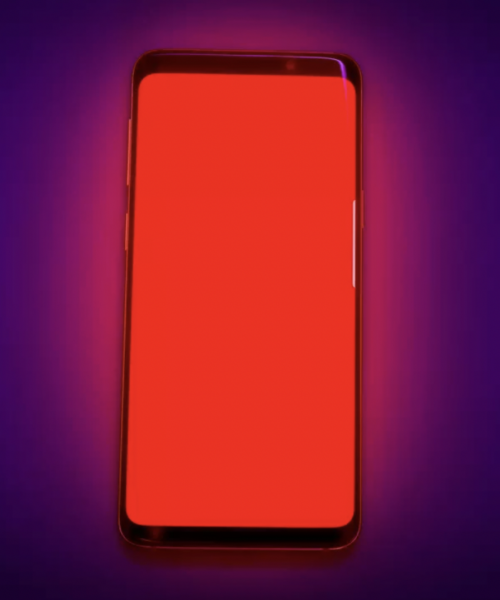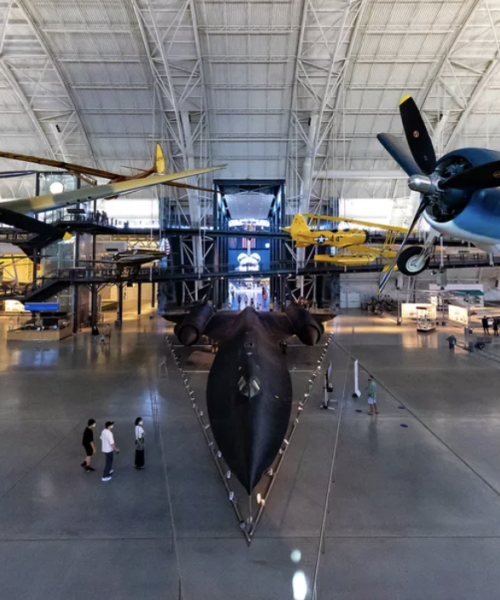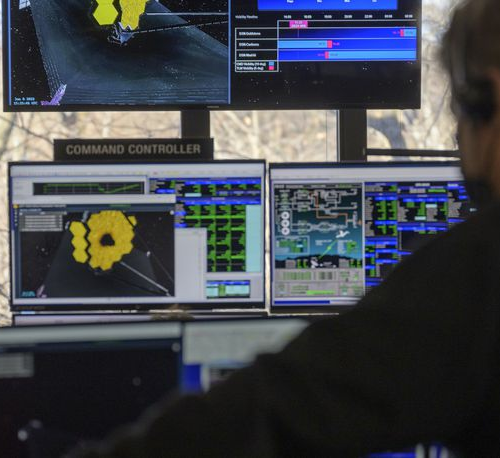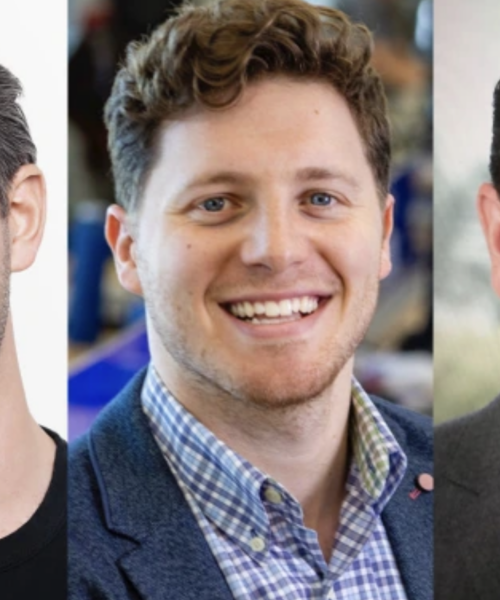Scott Stein | CNET.Com
Troy Warren for CNT #Technology
Vishal Shah, VP of Metaverse for Meta (formerly Facebook), talks to CNET about… well, the metaverse.
Facebook was renamed as Meta this week, as part of a broad push to focus on the cross-device multiverse vision for social networking that Mark Zuckerberg has talked about for months. The name change, announced at the company’s developer-focused Connect virtual conference, happened in the same week that a cache of internal documents pointed to Facebook’s role in perpetuating hate speech, misinformation and other harmful content.
Meta hopes to find a future beyond the current moment, aiming to build solutions to social media problems that still haven’t been solved. What role will a new metaverse play in this, and what exactly is Meta looking to achieve in the next few years? (And exactly what is a metaverse, again?) I spoke with Vishal Shah, former head of product for Instagram, and one of the initial key players in Facebook’s newly-formed Metaverse group.
That conversation, edited for clarity, is below.
What is Meta really about? What do you think the name change is really most about to you? And why?
In many ways, the name change has been in progress for a couple of years now. In 2019, we rebranded the company with a different word mark and a different logo, but it was still called Facebook. But the reason we did that in 2019 was because we were more than just the Facebook app and the Facebook product, and had been for quite some time.
I spent six years at Instagram, I know that very well. But at the same time, it felt like Facebook was still the iconic social media brand. It’s the brand that mattered in the space that we were in. But today, we are more than a social media company. We are certainly continuing to invest in Facebook and Instagram, and those apps’ names are not changing. But the company is investing additionally into the next computing platform, into the metaverse. Which, by the way, is not something that we will build by ourselves. I think we’ve made that pretty clear today. And we will continue to kind of make that case, because there is no such thing as the meta-metaverse. There’s one metaverse, and it’s like saying we are building the internet, that’s not how it works. But it is an important ambition for us as a company to indicate that we are more than just social media. And that’s really what the name change has signified for us.
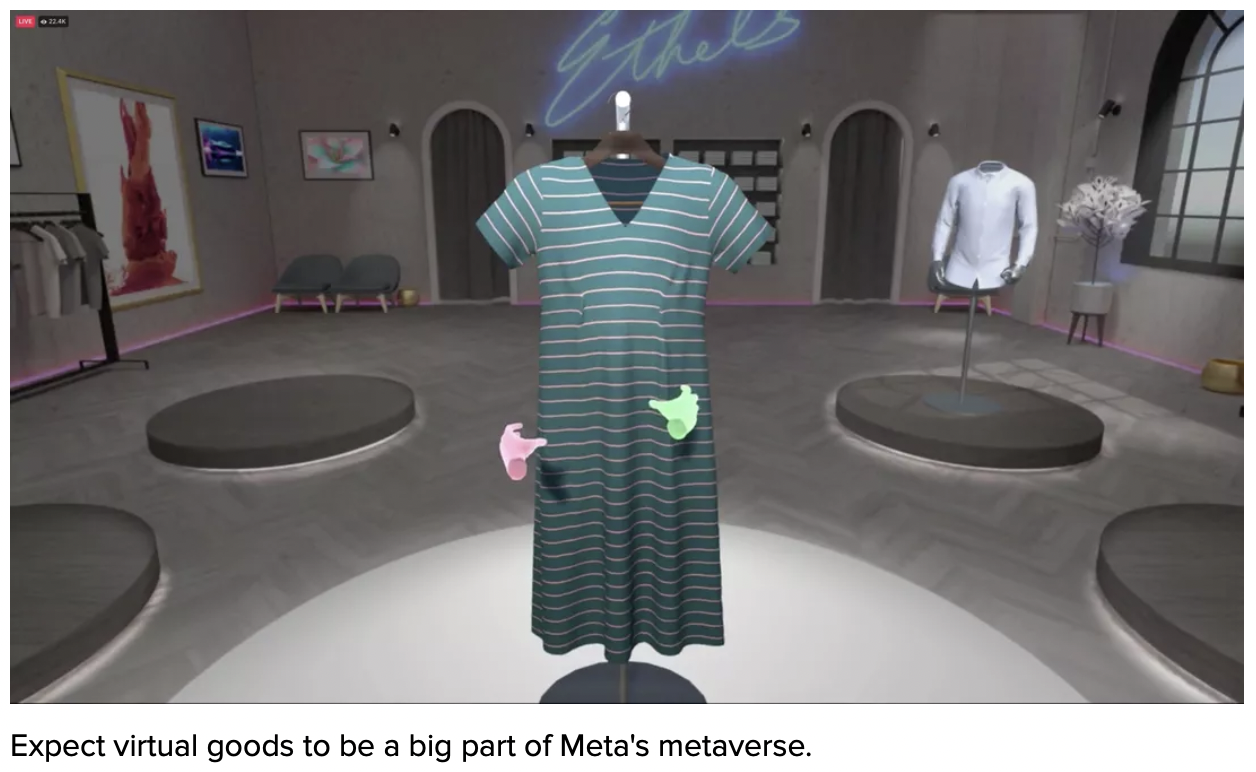
A big theme I got was commerce. I know there’s a lot of money in that on Instagram. Is a lot of this about trying to find ways to make these [new] worlds more profitable?
At Instagram, I spent quite a bit of time thinking about creators and the Instagram ecosystem, but also commerce, and small businesses using Instagram to make a living. And it’s why we are talking about creators and commerce so much right now. For any new platform, you need to ensure that those who invest in that platform have an ability to make a living, to make it profitable for themselves.
And don’t get me wrong: We are a company, we are also investing in this space heavily, and we want to make sure it’s sustainable for us, too. I’m not going to pretend that’s not true. But the entire premise is that the experiences that people will have will not be built by us alone.
They will be built by creators, individuals, individual builders, amateurs that are going to hopefully find something incredible to make. Products that we build, but also other companies who will build experiences that are interoperable with the things that we’re building. And so I think, talking about the business model, talking early as we’re starting to think about how this might evolve, is for that purpose, for ensuring that creators and builders and developers really know where their business could be going. To be honest, I think we were a little bit late on this at Instagram, and we don’t want to make that same mistake.
Do you think it’s also about scale to some degree? John Carmack spoke about the importance of all the users and money in 2D apps, and that [VR] has to go meet them, versus the idea of them coming to meet and adapt to [VR]. Is that part of the challenge when it comes to a greater economy?
It is. And actually, we made this point today, we think the next generation platform will not only be in VR, and will not only be in AR. It will have to cross all devices and all screen types. Especially when you think about social experiences where you can do them with other people. You’re going to need the people that you care about to be there. And if not everyone is on the latest kind of hardware, or the latest medium, then it makes it difficult to actually have meaningful concurrency in terms of an experience people can do together.
That’s on the social side. It’s also certainly on the creator side, I think it is different, building 2D media. Some creator who films a [Facebook] Reel isn’t going to necessarily go in tomorrow and know exactly how to go build a world in Horizon. But you can imagine a creator on Instagram having a world that represents the stuff that they’ve made and being able to invite some of their fans in, and you have a synchronous space that is a map to a more asynchronous broadcast space. That’s an idea, maybe not the only one, but you can see the bridge between these two worlds being pretty important.
There’s a big world of creators on Instagram, there’s a lot of people doing things in Facebook. How soon do you see what they’re doing crossing over into some of these other territories?
I think you’ll start to see that in the next couple of years. So, sooner than that five-to-10-year-out thing that we talked about. But I don’t know if the right thing in VR is to take a 2D-centric experience and just expect that to be ideal. I think you’ll start to see some of that with the progressive web app stuff we talked about today, because it’ll be easy to bring some of these experiences in, but then you’ll start to see them evolve to be more native to a more immersive experience.
The other way around is also true: A 3D experience that was built for VR first, if it is now going to show up on a phone, what does that look like? What is the interaction pattern? How? How do you move around in that space? I think there’s a lot of questions to be solved there. So those questions exist in both directions.
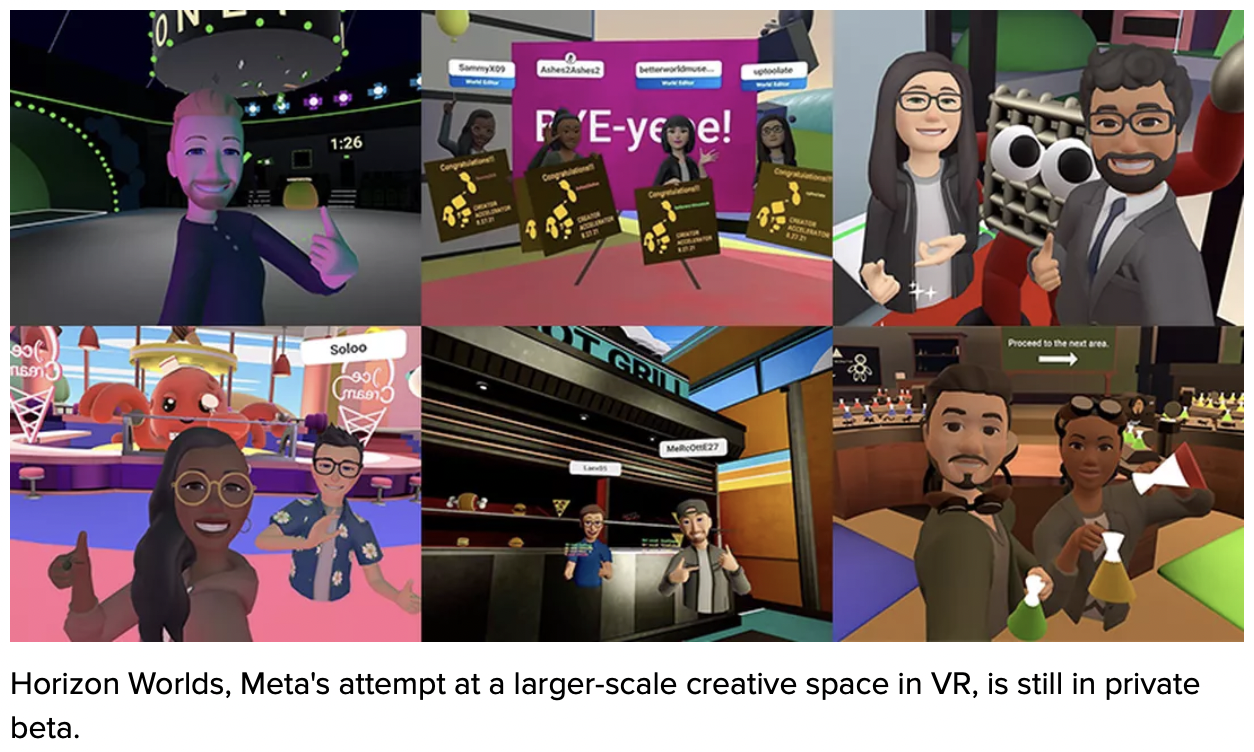
I recently met with some of the team on Horizon Worlds, and I know that’s been developing over time. Is that a simultaneous thing you’re pursuing, or do you see a lot of things on phones and computers being an immediate focus? Andrew Bosworth brought up digital goods as a big thing and “crossing over state lines.” Do you see these [digital creations] carrying over between all platforms?
A lot of the work we’ve done over the years on creator monetization, tipping, subscriptions, some of the commerce work that we’ve done, will directly apply to the new work that we’re doing. And then thinking about how the continuity between them can exist, to the “goods across state lines” point. That’s a fundamentally important point for metaverse experiences generally, is that you have this idea of co-presence, but you also have this idea of continuity across these spaces.
Certainly, the experiences we’re going to build will be that. But ideally, our goal is to have those things be interoperable across more than just the stuff that Meta builds. Thinking about how these systems, whether it’s on the commerce side or the creator side, can be more interoperable is exactly the stuff we’re trying to figure out and build.
Is content going to flow into other apps and ecosystems, and are you going to welcome other stuff in? Openness is a big question with this.
That is exactly the set of questions that we’re wrestling with. This is different, for us to talk about something so early. A lot of times we’ll go out there and we’ll say, “here’s what we’re going to do now, and here’s what the next generation of things will look like: shipping next week.” This is different. This is stating our intentions early, talking about what we know, also what we don’t.
I would love for these things to work more fluidly across experiences that other companies build. How exactly that happens, what parts of the stack that happens in, and what’s a completely open standard versus what’s more of a protocol API that everyone can build against, that’s the stuff that we’re going to have to go and figure out.
Why do you think it is being talked about so early? Because that was the vibe I was getting as well: there’s a lot of [future] concepts going on, and yet you have a lot of real products that simultaneously exist.
I think for two reasons. The format of [the Facebook Connect] presentation, we certainly could not have that done in an in-person Connect. The ability to use your imagination and think what this could look like was really only possible in a virtual format. We took that opportunity to paint a longer-term view. There was some stuff in the keynote that was very much tailored to the standard Connect audience, developers and creators, and those really deep in the space. But a lot of the use cases and the vignettes were very general.
Thinking about the future of education, thinking about the future of fitness. My kids loved the idea of playing basketball with their cousins who live in New York, right? There’s just something about that. That’s very, you know, human. So that’s why it was a bit more conceptual. That’s the one reason. The second reason is, I think it’s important to be able to have some of the open questions around norms and standards, and what’s acceptable from a security and privacy and integrity perspective, and have those conversations much earlier than when something is at massive scale.
If there’s one thing we’ve certainly learned over the last 10 or 15 years, the earlier you can have those conversations, the better you can be both as a company building these things, but also as a society kind of figuring out how to think about them.
How do you imagine then working with so many of the Facebook apps that are already at massive scale? How do you deal with those in relation to ones that are not at scale, in terms of redefining, or trying to control more of those elements?
This comes down to exactly how we think about which parts of these experiences can flow between these different platforms, and which ones are more native in the next generation.
It may not be the case that every single thing is completely compatible across both given the conversation we just had. At the same time, a lot of the experiences we’re talking about here are more synchronous in nature, and we have those today, certainly in our apps. But I think a lot of our apps today are more broadcast oriented, more asynchronous, in nature.
A lot of the conversation we’re having here [in our Zoom chat], in a real-time way with glowing rectangles, hopefully, you’ve had a chance to use [Horizon] Workrooms or something similar, it’s a fundamentally different experience. A new set of paradigms around what makes sense in these synchronous real-time kind of co-present experiences need to be defined.
A couple of times [in the keynote], there was discussion of applying what was learned from struggles in social media, and applying them to the metaverse. Can you be more specific?
Well, the how is, I think, pretty clear: that we can’t do them alone. And that might be a combination of companies, but also regulators, and policymakers, and having those conversations open. Nick Clegg posted a bunch of principles for us a couple of weeks ago at the Atlantic festival around where we are already doing research, engaging more broadly, externally. It’s not just who’s doing it, but how is really important. And the when, we’re starting now. To establish on these principles, we’ve been talking about regulation in our space for years now. We don’t have it yet. So we need to get to a place where we substantively have that conversation early because I think it helps to have these things a bit more clear.
With Instagram in particular, there have been issues where people have experienced harm through it. How do you be more transparent about some of the setbacks and some of the harms?
Some of this will come down to norms that get established. So one place I’m spending a bunch of my time right now is thinking about avatars and identity and expression, and how people show up in these digital spaces. Because sometimes you may want to show up and look exactly like your physical self, because you choose to be in a more professional setting. Sometimes you may want to hang out with your friends in a social place and be a dragon, that’s totally reasonable.
But when it comes to self-expression, and it comes to representation, one of the challenges with with the physical constraints that people have today is that there are real challenges in the physical world that people have to overcome, whether that’s race, geopolitical challenges, things that right now are deeply real and and show up in the in the digital world. I don’t know how those things are going to play out in these new experiences. But I know that if we don’t ask those questions now, we’re going to be unhappy that we didn’t ask them.
A better way of answering your question is, if I had perfect answers to everything that we were trying to resolve now, like, that’d be kind of boring. But also, if we weren’t asking the questions now, I think you’d be pretty disappointed.
Horizon Worlds has gone through a long private beta. Do you imagine building more safe spaces to explore these issues as you roll it out? Will it be something that you want to keep a little contained, while you work these issues out?
If you look tactically, I think that’s why some of these things have evolved in the way they have, or they’ve been more closed betas as we learn some of these things. Also, it’s hard to know where some use cases might come through until you have more scale. You can only learn certain things at a small size. So I think it’s going to be a mixture of both.
You kind of implied this question, which is the reason that I’m more bullish about this space than I think maybe people give us credit for, is that we know what kind of questions to ask. We also know that I think we don’t know yet. We certainly couldn’t have predicted the questions we had to ask now, 15 years ago. Some of them, maybe, but not all of them. And so some new ones, we’re going to have to go figure out. As a company, I think we’ve definitely learned that it’s not just about “build it and they will come,” and ask no questions.
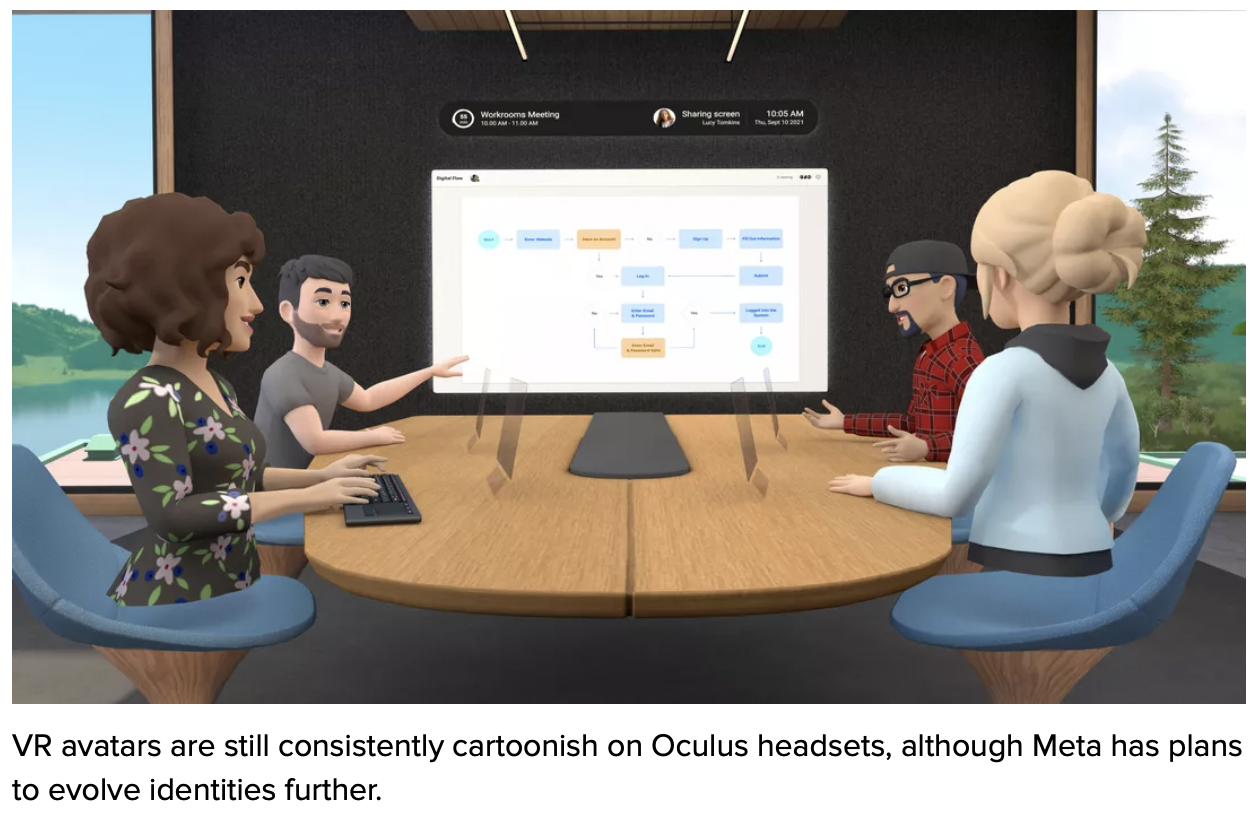
Between avatars and filters, how do you think identity keeps shifting in this future space? Because right now, in VR, we are a little more consistently avatar focused. Do you see all that becoming much more fluid? And people even having multiple identities?
I do imagine people having multiple identities or even an identity with different kinds of representations, depending on where you are, what space you’re in, how you’re showing up. I think people’s appearance and how they want to show up in a space is a mode of self-expression. In our own avatar system today I have one outfit, and I typically don’t wear one thing every single day. Mark does, but I don’t. So I probably want to have the ability to wear different things. Even that doesn’t exist in our ecosystem today. There’s quite a bit of space, I think, to kind of figure some of the stuff out.
Where I just don’t know the answer yet is what norms start to establish in these different spaces where people might feel they have to show up a certain way or they have to look a certain way to come to a certain space, and how much of that is a choice people can make, or a creator an admin gets to make some of those choices? I don’t know. I don’t know how that’s going to evolve just yet. But I do think how people show up, and the fact that they can and should show up in different ways, in different spaces, is important.
So you might be a hologram, you might be a window popping up. You might be a cartoon? I think about video games, possibilities of skins. There’s clothing but there’s bits up beyond that, and identity could be something that’s part of the commerce of it all, as in games.
That’s right. And some of that will be deliberate, where people will go to a store or a marketplace equivalent to buy those things. And some will be in situations where you come across something, and it might be, “Oh, what is that? Can I get that?” And it may be limited-edition type things, which is sort of what we’re seeing in the ecosystem.
The commerce opportunities are certainly quite interesting. Especially for the person who built that object, right? If you think about it, someone can create something really interesting and exciting. And then it can be distributed across the world and people can buy and they can make a living off that. That’s pretty awesome. That’s not something that is easily done today, certainly in physical goods,
I know the Metaverse group was created ahead of the reveal of the company name Meta. Is that group you? Are you essentially the core of what Meta is? Or is that group particularly focused on some additional questions as the rest of the different parts of Meta work together?
The broadest answer to that is the whole company is focused on figuring out what makes sense in this future that we just described, in different ways. So I work really closely with our team building hardware to think about what they might be creating, even though it’s not part of the Metaverse group that I run.
My team is mostly software oriented, building these experiences, the platform, as well as the experiences that people will have. But increasingly, that will not just be a thing we build alone, to the point you’re making. Even inside the company, because of connection to the apps and some of the work we’re doing across our own ecosystem, as we start thinking about the platform more broadly, not just something that’s Meta alone… it’s really tough today for me to switch between the Meta name and the Facebook name, and I’ve had it in my head for a lot longer. [laughs]
There was an AR headset once that was called Meta. Did Facebook purchase the name from somebody? Or was it something that Facebook had for a while?
Well, you can imagine a name change like this is not something we could have pulled off in a couple of weeks, though some people might say we did. Some of this has been in the works for a while. As I mentioned, I think 2019 was where we started the journey, even just thinking more broadly than the Facebook app from a branding perspective. But these changes have been in progress. The name itself has been something that we’ve kept a pretty closely guarded secret inside the company as much as we can, because these things have a tendency of getting out there.
Where do you imagine “Meta” showing up the most in terms of the name?
An important point to note is we expect the Meta brand to be a consumer-facing brand. It’s not a parent company that’s off the background that people don’t know about or think about. Whether that’s more of an endorsement for some of our existing brands that people do have relationships with … It was, frankly, a little bit confusing for some people to see “Instagram from Facebook,” when they assumed that “from Facebook” meant from the Facebook app, not the Facebook company.
But it was important for us for people to know that the Facebook company brought Instagram and WhatsApp and others to market. There might be some that are more endorsements like that, there might be more sub brands, more hardware. There’s probably others who could give you a more detailed, brand schema answer to that. The most important point, the Meta point is that it is a brand that consumers, I think, will get to know.
With VR headsets moving to additional work logins, does that also apply to people choosing additional logins beyond Facebook? It sounds like Meta is allowing the hardware to maybe move outside of not just being about Facebook and not being about Instagram. Do you see that to be the case?
We’re still working through a bunch of the details on this. What we said today was we have more to announce in the coming year as we think about how this might work. But one thing is clear, we’ve heard the feedback that people don’t necessarily want some of the hardware connected to their Facebook app accounts. And so that’s the feedback we’re taking in but exactly how that will play out, stay tuned.
I know there’s this whole vision of what’s going to be happening in the future. Over the course of the next year, what do you think are the key things that will immediately play out?
What you’ll see in the short term is a continued emphasis on some things that are already out there, that we’ll just make better. Some of our avatar work, Horizon World work. Horizon Workrooms is about to get some new customization, potentially being able to have more people in a given work room.
In the short term, you’ll see these experiences that we think represent the type of experiences in the future that are going to be really important. And then how those things evolve, and how they get integrated across other screens and devices, I think is stuff that hopefully we’ll get a chance to talk about during the coming year as we launch them.
Connect was weird in the sense that… the week was intense. And yet [Facebook’s] tone was very optimistic and very future forward. There were a lot of breakouts in the event about, “Well, let’s think about the years to come.” But how does that get wrestled against the current concerns? People worry the concerns are not being taken seriously enough and [Meta is] rushing into the future, without really getting to deal with those.
We are certainly not running from the past. In fact, if we were trying to do that, we wouldn’t make an announcement like that. In this cycle, I think it only draws more attention to what we’re doing, not less. Second, even the logo and the branding, pull a lot of the heritage for it. It’s Facebook blue, the color of the logo and the font is the same. And we aren’t shying away from some of the challenges of today, we are engaging on those deeply, we are actively having those conversations.
However, as we called out in earnings this week, this is a significant area of investment for us. An estimated $10 billion dollars in 2021. From a timing perspective, being able to talk about our level of investment, and why we’re making those investments, and what we’re looking at over the long term, was important to communicate both for our employees, to the public, to our investors.
And I think that timing, therefore, unfortunately landed when it did even though the timing was planned much further back, and Connect has been planned for quite some time. But I’m quite proud of the work that we do on our current products. I’m extremely proud that we are able to continue to build for the future, and that the future is inherently about people. And that’s what we as a company have always stood for and will continue to stand for.
In Other NEWS






























